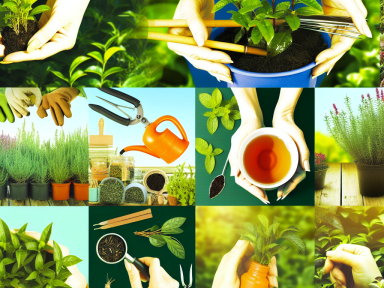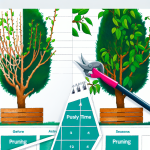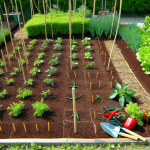Growing Your Own Tea Garden: Steps and Tips
1. Selecting Your Tea Plants
The first step in growing your own tea garden is selecting the right plants. Consider both traditional tea plants and a variety of herbs that can produce delightful infusions:
- Camellia sinensis: This is the plant traditional green, black, and white teas come from. Look for cultivars suited to your climate.
- Peppermint (Mentha piperita): An invigorating herb, great for digestive health.
- Chamomile (Matricaria chamomilla): Known for its calming properties; both German and Roman chamomile are suitable.
- Lemon Balm (Melissa officinalis): Offers a mild sedative effect and a refreshing, citrus flavor.
- Hibiscus (Hibiscus sabdariffa): Provides a tart flavor rich in vitamin C.
2. Understanding Growing Conditions
Camellia sinensis
- Prefers well-drained, acidic soil with a pH between 5.5 and 6.5.
- Grows best in partial shade to full sun; ensure it receives morning sunlight and some afternoon relief in hotter climates.
- Regular watering is crucial, but avoid waterlogging. Mulching helps retain moisture.
Herbs
Most tea herbs share similar growing conditions:
- Require full sun, although some like peppermint tolerate partial shade.
- Prefer well-drained soil with a neutral pH.
- Herbs like lemon balm and chamomile appreciate a bit more moisture, whereas peppermint can thrive in wetter soil.
3. Planting and Caring Tips
Once you’ve selected your plants and prepared your soil, it’s time to plant:
Planting Camellia sinensis
- Timing: Plant in spring or fall to avoid extreme temperatures.
- Spacing: Space each plant 3-5 feet apart to ensure room for growth.
- Depth: Plant them so that the root ball is level with the ground surface.
- Watering: Water thoroughly but infrequently; keep the soil moist but not soggy.
Planting Herbs
- Timing: Generally, herbs like to be planted in the spring after the threat of frost has passed.
- Spacing: Allow approximately 12-18 inches between herb plants.
- Depth: Follow seed packet instructions or ensure transplants maintain their original depth.
- Watering: Water when the top inch of soil feels dry. Mulching around herbs can help retain moisture.
4. Harvesting Your Tea
Camellia sinensis
- Begin harvesting leaves when the plant is at least 3 years old.
- Pick the youngest leaves and buds for the best flavor.
- Pluck by hand or use small pruning shears to avoid damaging the plant.
Herbs
- Peppermint: Harvest just before the flowers bloom for maximum oil content and flavor. Cut stems down to about an inch above the soil level.
- Chamomile: Harvest flowers when they are fully open. Pinch or snip the flowers off with scissors.
- Lemon Balm: Cut leaves as needed, or harvest entire stems just before the plant flowers.
- Hibiscus: Harvest the calyces (the outer part of the flower) once they are plump and bright in color.
5. Drying and Storing Your Tea
Proper drying and storage are crucial to maintaining the flavor and qualities of your homegrown teas:
- Drying: Spread leaves or flowers in a single layer on a drying rack or tray. Store in a well-ventilated, cool, dark place. Alternatively, use a dehydrator set to a low temperature.
- Storing: Once completely dried, store in airtight containers. Keep them in a cool, dark place to preserve freshness and potency. Label containers with the date and name of the herb for easy identification.
6. Experiment and Enjoy
Now comes the fun part: creating your own tea blends! Experiment with different combinations and proportions to find your perfect cup. A homegrown tea garden not only provides a sustainable source of your favorite brews but also adds beauty and fragrance to your garden space.




GIPHY App Key not set. Please check settings